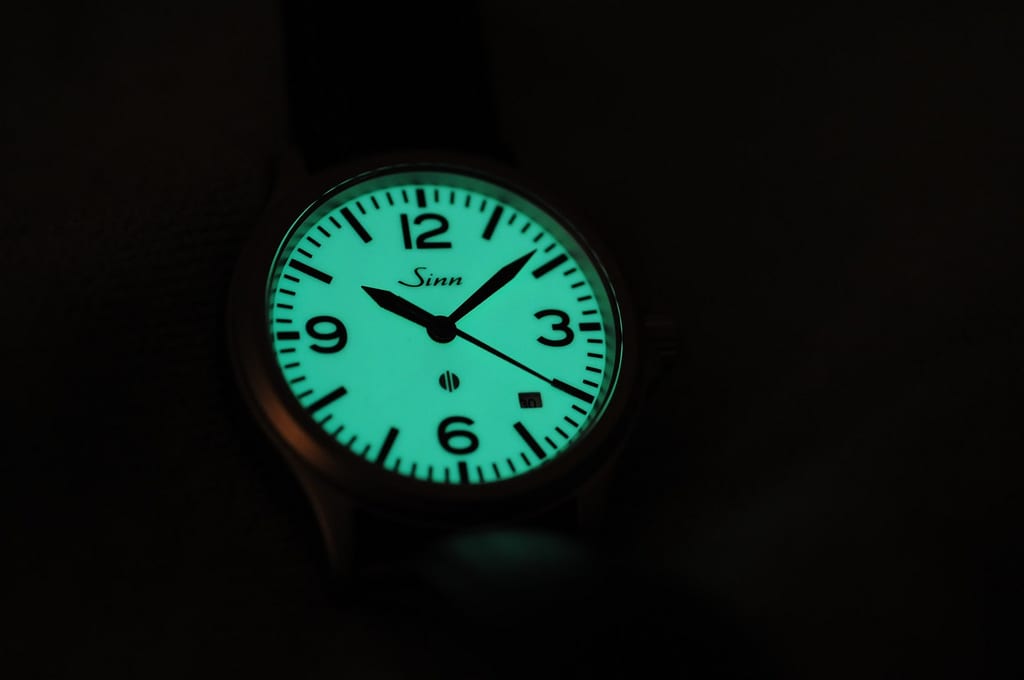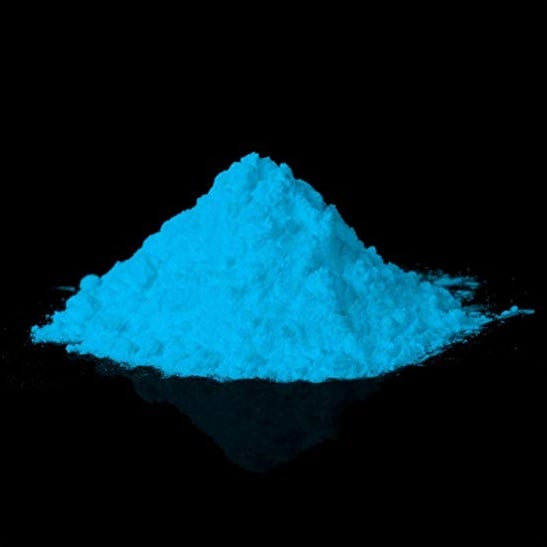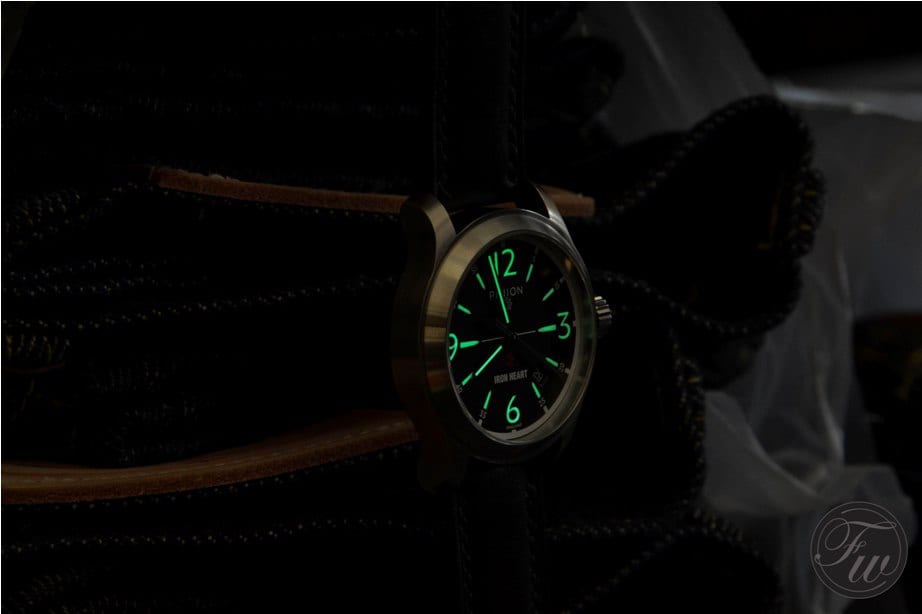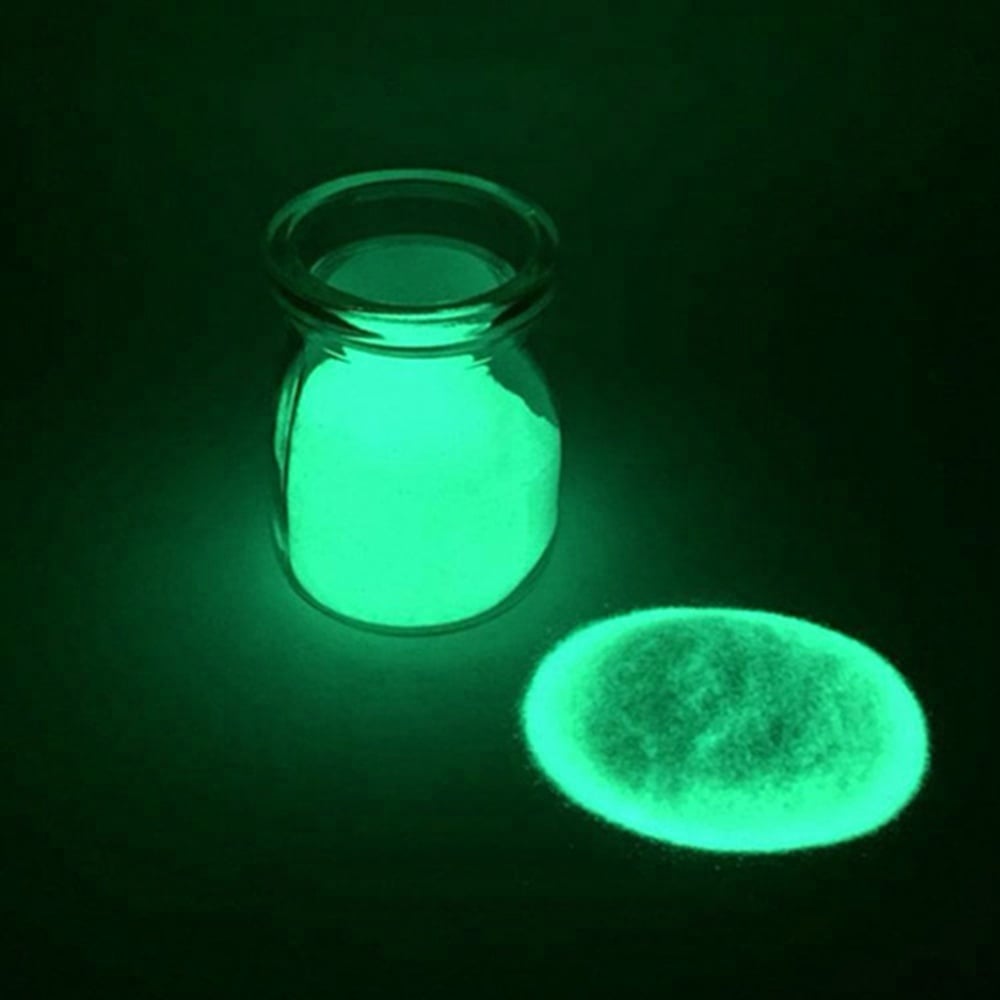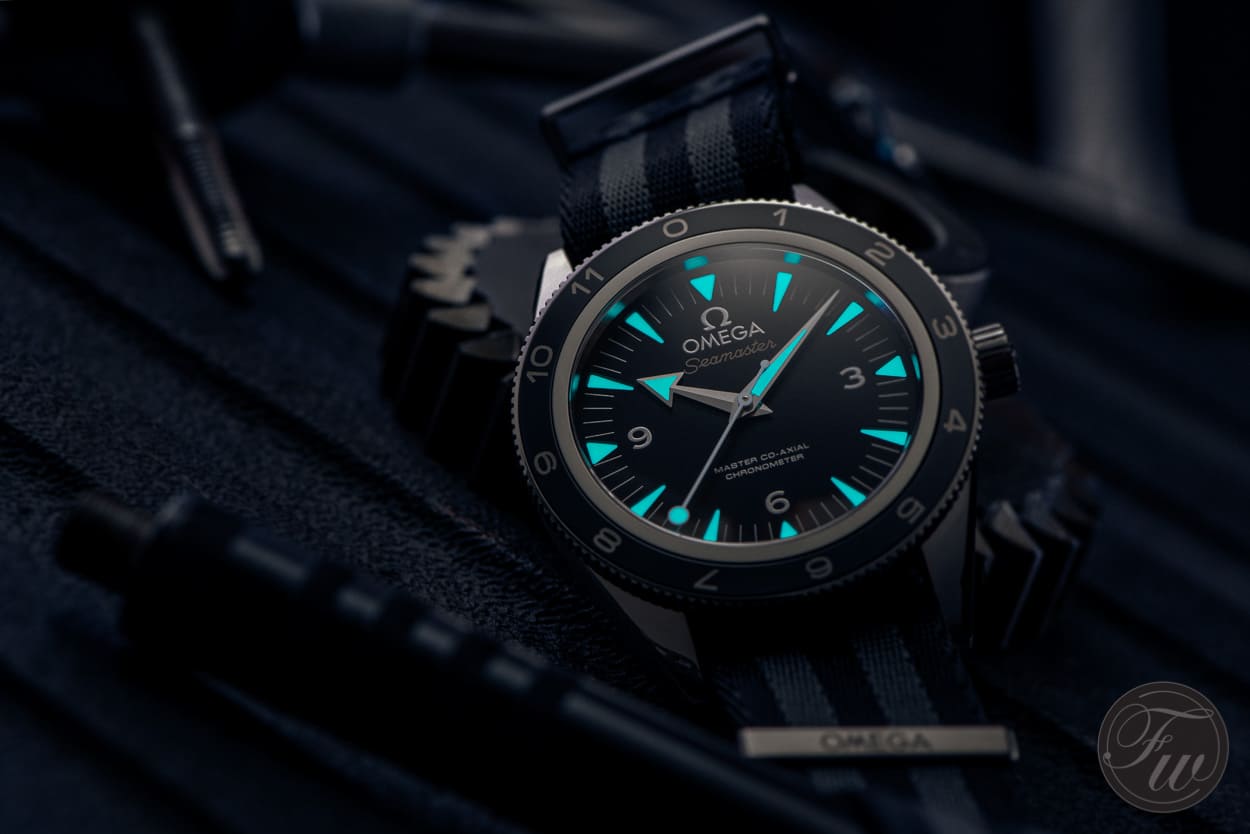You Asked Us: Will Super-LumiNova Discolor When It Ages?
Again interesting matter here at You Asked Us. One of our regular readers, Jordy, sent us a question about the possible discoloring of Luminova and Super-LumiNova.
You Asked Us: Will Super-LumiNova, just like Tritium, Discolor When It Ages?
Here’s the full text of the question:
From: Jordy
Message Body:
Hi guys!
This is a question that’s been keeping me busy for quite some time now. I’m relatively new to watch collecting and started my addiction when all new watches were produced with Luminova and Superluminova.
We all know that the older types of lume discolor when it ages. Is this the same with Luminova and why did they introduce Superluminova? What types of lume are there? Can we expect a slight shift of color in the Luminova over the years? My oldest watch is a Mark XV from 2002 and probably has Luminova but can’t quite see any discoloration, or they might have swapped the dial during one of the IWC services. I’m looking forward to your feedback on this subject!
Best regards, Jordy
A few questions
So in fact, there are quite a few questions in Jordy’s email. Will Luminova and Super-LumiNova discolor over time? Why was Superluminova introduced as a successor to Luminova? What types of Lume are there?
Which types of luminous materials are used in watchmaking?
To answer Jordy’s question ‘What types of lume are there?’ I would like to point in the direction of one of our friends, Hodinkee. Jack Foster, in July 2018, did a benchmark article on luminous materials used in watches. He not only explains which types of luminous materials were and are used in watchmaking, however, as well how and why they are luminous. There’s no way I would be able to add anything to that; Jack’s article is a must read when interested in this matter: Luminous Dials, What Makes Them Glow, And How To Spot Their Difference
In short, there’s Radium, a bit of Promethium (which Seiko used for a short period of time), Tritium, Luminova, Super-LumiNova, and probably a few brand-owned others like Rolex’ Chromalight and Seiko’s LumiBrite. You’ll quickly learn that Radium and Promethium are both radioactive chemical elements. Respectively with symbol Ra and atomic number 88, and symbol Pm and atomic number 61. And Tritium is a radioactive isotope of hydrogen (3H). So all of them have in common to be radioactive, something not very popular in the use of consumer goods, and thus the search for a solution at this point was still on.
The next two steps
In 1993 a next step came from a Japanese company named Nemoto & Co. They presented, and patented, a luminous material, which was named Luminova. Luminova doesn’t use a radioactive material to glow. Instead, it uses a material known as strontium aluminate (SrAl2O4), combined with the non-toxic and non-radioactive chemical element Europium. And to be as complete as possible, Europium is a non-toxic, non-radioactive chemical element with symbol Eu and atomic number 63.
There are two important differences between Luminova and the aforementioned light-emitting materials, Radium, Promethium, and Tritium. First, the most important and as mentioned, Luminova is not radioactive. But secondly, quite substantial as well, is that Luminova does not glow autonomously. It’s a so-called photoluminescent material, it needs to be exposed to a light source first before it’s able to glow.
A bit of confusion
There’s a bit of confusion about the difference between Luminova and Super-LumiNova. What is known for sure is that in 1998 a Swiss company RC Tritec AG in joint-venture with Nemoto, started the company Luminova AG to supply the Swiss watch industry with luminous material. All major Swiss watch brands use this luminous material for their dials and hands meanwhile.
From 2000 onwards, at least in the market, the name of the luminous material changes to Super-LumiNova. Some say that Super-LumiNova is an enhanced version of the original Luminova, which was meant for industrial use. Fact is that the luminous material, supplied by Luminova AG/Tritec for the use in the watch industry, always has been different to the standard industrial Luminova from Nemoto. So much is clear that the nowadays named Swiss Super-LumiNova is at least way more costly than the industrial Luminova, as still produced by Nemoto (in Japan and Portugal).
Interesting to see that on Nemoto’s website the brand name LumiNova is still used. While at Tritec’s website Swiss Super-LumiNova is mentioned as the brand name for the luminous product for use in the Swiss watch business. It might just be that the addition ‘Swiss’ makes the material more expensive, as is sometimes the case with other products carrying the ‘Swiss’ label. But that isn’t the case here. The Swiss Super-Luminova is entirely hand made and controlled in Switzerland and has a much higher standard towards color and light emittance than its Japanese industrial counterpart.
ISO standardization of photoluminescent deposits applied to time-measuring instruments
Swiss Super-LumiNova can be found in three different grades nowadays. Standard Grade, Grade A, and Grade X1. Grade X1 is said to have a performance increase of up to 60% after two hours compared to the Standard Grade. RC Tritec informed us that the legibility according to the ISO 3157 standard of Swiss Super-LumiNova Grade X1 will be extended by at least a factor of 1.6 on the long term. Tritec refers to ISO 3157:1991 which is now withdrawn. The current ISO standardization which specifies the test methods for the photoluminescent deposits applied to time-measuring instruments is ISO 17514:2004. For those of you interested, it can be found here at CHF 38.= Swiss Francs. While the activation conditions are the same for the 3157 and 17514 ISO standards, in the latter there is not really a visibility limit defined. Therefore Tritec prefers to keep the ISO 3157 in the back of their mind.
Further developments
So in the array of Jordy’s questions, we’ve arrived at Swiss Super-LumiNova. That was the year 2000, meanwhile, there have been further developments in luminous materials. While at first Luminova and Super-LumiNova glowed mainly greenish, other colors were developed as well. Rolex, for instance, changed in 2008 from Super-LumiNova to its own proprietary compound, Chromalight. Chromalight shines blue rather than green, and Rolex states that the glowing lasts longer and it’s easier for human eyes to read in dim lighting. Seiko has its own proprietary luminous compound as well, which was named LumiBrite.
RC Tritec is continuously adding new emission colors to its palette. May last year for instance, yellow, orange, pink, and ultramarine have been added to the already available green, blue, violet, and white.
Not only the color of the emitted light of Super-LumiNova developed over time, as well the outside color of the luminous material when shown in daylight. While Super-LumiNova, in the beginning, looked pretty much white, many manufacturers changed the color of the luminous material to more yellowish or even creme and brown. And not without a reason.
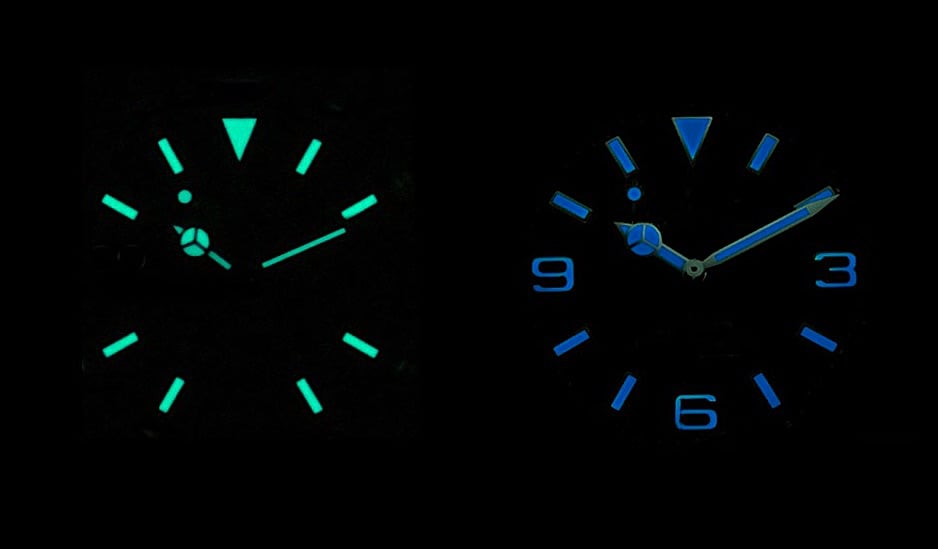
Earlier Rolex with green emitting Super-Luminova and a later model using Rolex own Chromalight [picture found at fourtane.com]
Will Super-LumiNova discolor when it ages?
With the ageing of Radium and Tritium, the color of these materials changes. Besides a degradation in functionality, this creates a patina on the luminous markers and hands of a watch. It now just happens that this patina is loved by many vintage watch collectors. A bit of a strange situation, when people love it that something deteriorates, isn’t it?
Anyhow, with this deterioration, there’s a change of color of the index markers and hands. And that’s what distinguishes a vintage watch from a new one. That as well, it is an indication that a vintage watch might still have the original dial and hands. Although the latter is not very reliable at all, which again can be learned in Jack’s article on Hodinkee.
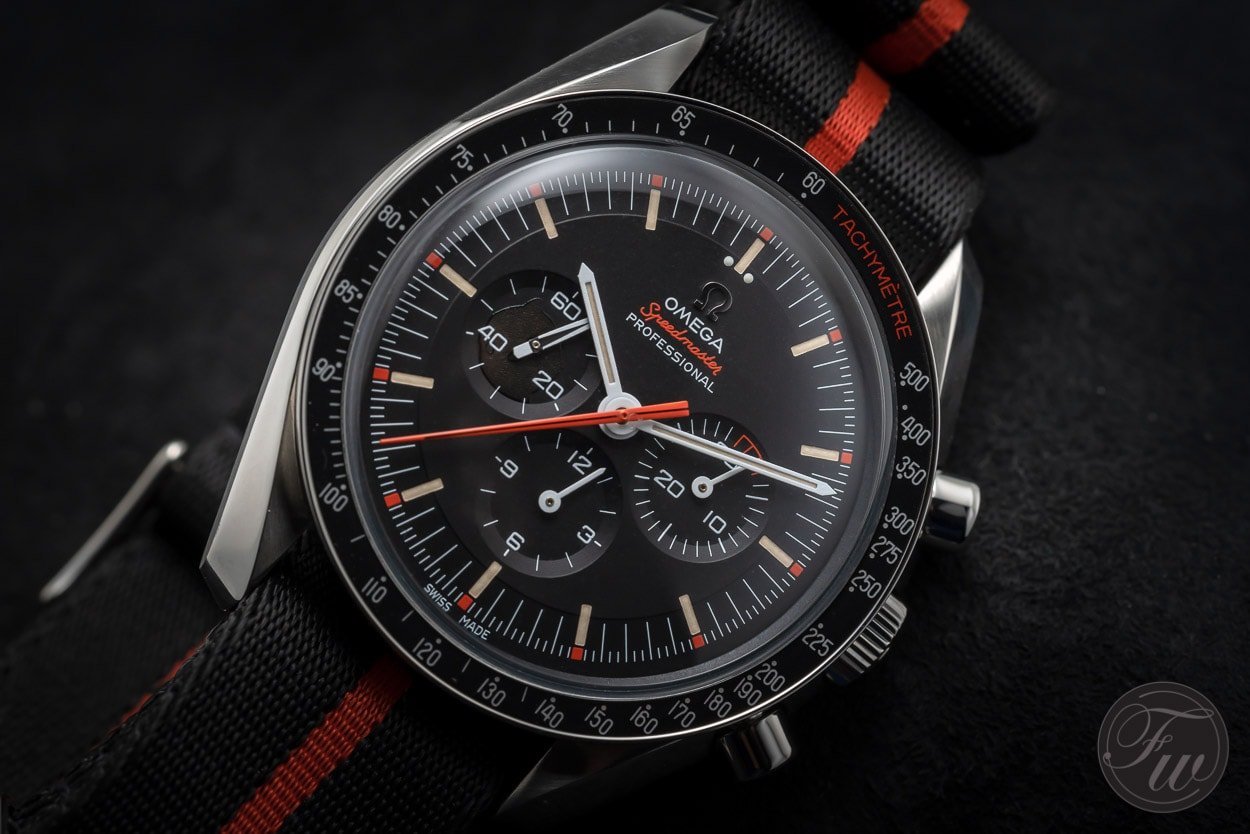
The Omega Speedmaster Speedy Tuesday II ‘Ultraman’ using a faux patina colored light emitting material.
Does it or doesn’t it?
And here we’re getting to the disclosure of our quest. Luminova and (Swiss) Super-LumiNova are not prone to discoloration or ageing over time. They don’t fade, nor will interact with moisture. White will be white forever.
With the current thirst for vintage looking watches, this isn’t specifically an advantage. Of course, the benefit is for not being radioactive and for longevity. However, pure white index markers and hands don’t resemble much to vintage watches. That’s, amongst other aesthetic reasons, why many watch brands were looking for different colors of Super-LumiNova. One of the most applied colors is slightly off-white, to even brownish, or the so-called faux patina. You like it or not…
Notes:
I found some of the pictures used in this article through Google Images. If these pictures point out to be yours and you would like us to credit you, please let us know. And if you should have a question for us to answer as well, please don’t hesitate to contact us through our contact form.

